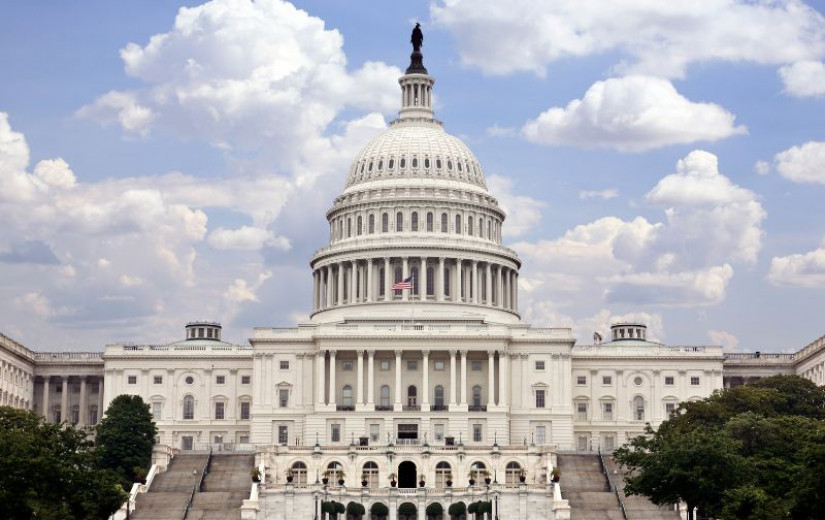
The New Documentary About Megalopolis Only Makes It Seem Even Wilder That This Movie Exists
Megadoc takes us inside the making of Francis Ford Coppola’s grandest folly.
By Sam Adams

There are two kinds of movies that can support a feature-length documentary about their making: masterpieces and disasters. Francis Ford Coppola’s Megalopolis is, somehow, both. Financed with $120 million out of Coppola’s own pocket, it might be the most extravagant vanity project ever made, the realization of a 30-year dream that no responsible entity would ever have said yes to. And yet, as unhinged and occasionally just-plain-bad as it can sometimes be, it’s also glorious in its obstinance, its refusal to conform to contemporary notions of what a movie has to be. It’s categorically impossible for a multimillionaire octogenarian with multiple Oscars on his mantel to make outsider art, and yet: damned if that’s not what Megalopolis is.
Megadoc, Mike Figgis’ on-set account of the movie’s four-month shoot, is fascinating in its own right. Although he spent the better part of a decade flirting with Hollywood, culminating in dual Oscar nominations for writing and directing Leaving Las Vegas, Figgis has always been more of a self-proclaimed outsider—the minute he was done with awards season he set about making a string of increasingly unwatchable features with titles like The Loss of Sexual Innocence. That puts him in a fascinating position as Coppola’s chronicler: sympathetic to the director’s aim to lavishly challenge what cinema can be, and yet aghast at the resources he expends in that pursuit. “I am intrigued to see how anyone could spend $120 million of their own money on a film,” Figgis says in voice-over, and when he says the word money, it sounds like a question.
Early on, Figgis talks to George Lucas, who got his start as a film student shadowing the production of Coppola’s Finian’s Rainbow. The two remained lifelong friends—Coppola produced Lucas’ earliest hits, and Lucas attended Megalopolis’ Cannes premiere—and yet, as Lucas observes, their personalities are diametric opposites. Lucas’ instincts are entrepreneurial and fundamentally risk-averse: He achieved his independence by founding still-thriving businesses like Industrial Light & Magic and Skywalker Sound, and although he spent decades saying he wanted to making the kind of small, personal movies he started out making, the closest he came was funding the Star Wars prequels out of his own pocket. Coppola, in Lucas’ words, is “a jump-off-the-cliff guy.” After the astonishing 1970s run of Godfathers, The Conversation, and Apocalypse Now, Coppola burned through cash as fast as he could make it, spending it on eccentric boondoggles like the Silverfish, a custom-wired Airstream trailer that allowed him to direct a movie far away from the set years before the “video village” become commonplace. (“That’s my polio mentality,” Coppola, who was bedridden with the disease as a child,” tells Figgis in Megadoc. “I retreat to the iron lung.”) In strictly financial terms, he’s probably more successful as a vintner than he was as a filmmaker, but when he speaks of how the great filmmaker Jacques Tati—essentially France’s answer to Charlie Chaplin—spent himself into bankruptcy making his extravagant masterpiece Playtime, he does it with a sense of admiration. Why would you want to die with money in the bank?
Even so, Coppola, who hadn’t made a studio movie since 1997, seems aghast at how cumbersome large-scale filmmaking has become. (The documentary does not address, one way or the other, the reports that Coppola attempted to kiss extras on set, an allegation he denied and later filed a defamation lawsuit over.) He stares at the vast folding tables laid out to feed the movie’s cast and crew and can’t fathom why it takes so many more people to make this movie than it did Apocalypse Now. He hires the production designer from Guardians of the Galaxy Vol. 3 and a visual effects supervisor who’s worked with Martin Scorsese and Steven Spielberg, and both of them are thrilled at first to be working on a movie with the director of The Godfather, only to discover that they’re actually making a movie with the director of Twixt. Figgis seems to take a certain delight in putting the budget’s line items on screen—$16 million for locations, $9.4 million for transportation, $3.5 million for the camera department—as the production struggles to find any direction at all.
Coppola rebuts Figgis’ suggestion that he thrives on chaos, but at the very least he seems unafraid of it. Adam Driver, who arrived late to the production on a tight shooting schedule, recalls how Coppola stopped in the middle of his first scene, not because anything was wrong, but because “we’re not risking enough.” The opportunity to go on a mad adventure with Coppola is clearly what drew much of the cast and crew to the project, and it’s what makes Megalopolis, for all its flaws, such engrossing viewing—you have certainly seen better movies, but you have never seen a movie like it. It’s also what must have drawn the previous casts it attracted during its decades of development, who we catch tantalizing glimpses of in footage from Coppola’s archives. There’s a 2001 table read with Robert De Niro, Uma Thurman, and Billy Crudup, and green-screen footage from a 2003 shoot with Ryan Gosling in Driver’s part. It does seem like kismet, at least, that the movie took long enough to get made for Aubrey Plaza to replace Thurman and Virginia Madsen in the role of the scheming telejournalist Wow Platinum. Other actors’ relationships with Coppola go back much farther—Giancarlo Esposito, as the mayor of dystopian New Rome, seems to be the sole surviving member of the 2001 cast—but Plaza is the one who best matches his energy. (She also, not surprisingly, gives Megalopolis’ most memorable performance.) In footage of her Zoom audition for the part, she spars with Coppola in a way that isn’t always playful, and she recalls that when he first sent her the script, she responded with, “This is a nightmare.” While Shia LaBeouf, as the ruthless alt-right nephew of Jon Voight’s wealthy banker, exhausts Coppola with endless questions about his character’s inner life, Plaza catches the waves like the trained improvisor she is.
Perhaps the only one as quick on their feet is Figgis himself. He’s acting under serious constraints, including the whims of some of the movie’s more high-profile talent: Driver, who plays the visionary architect Cesar Catilina, doesn’t want to be filmed at work on the set, although Figgis’ camera occasionally peeks around a corner to catch a glimpse of him, and Nathalie Emmanuel’s agent apparently issued a demand that the Game of Thrones star not be filmed in the act of eating. But he finds his characters, the actors and crew members most willing to open up and let him into the often maddening, sometimes exhilarating process of creating one of the most singular movies ever made. Megalopolis itself is currently in a strange kind of limbo: Coppola has said he has no current plans to release it to streaming or home video in the U.S., preferring to use it as the showpiece of a sporadic personal appearance tour. But you can see Megadoc for the mere price of a ticket, and even if there’s no opportunity to ask the actors questions in the middle of the movie, you’ll have plenty to talk about afterward.
Get the best of culture
Get the best of movies, TV, books, music, and more.









